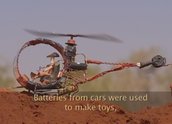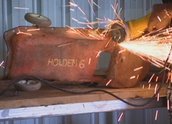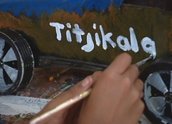


Bush Toys (2008)
Synopsis
Bush Toys documents the continuity of the bush toy-making tradition in the Titjikala community, 100 kilometres south of Alice Springs. It follows a group of boys finding the materials, creating toy cars and exhibiting their works. The bush toys achieve critical acclaim in New York, at the high end of the art market.
Curator’s notes
Making bush toys preserves a cultural practice as it adapts, adopts, integrates and changes over time. The toys produced by each generation reflect the materials available, the experience with the non-Aboriginal cultures, and the unique interest of the artist.
The old people used natural materials to make miniature artefacts or carvings and used quandong seeds to play marble-type games. The next generation employed by the pastoral industry used old batteries and copper wire to make miniature horses, stockmen, windmills, stockyards and helicopters. The latest generation are concerned with transport and use old car parts, tin, wire, rubber, plastic, glass, china, and cloth to produce miniature cars, trucks and utes.
Each wave of new materials brought into the community, and later discarded as rubbish in the desert, ensures an endless supply of raw materials for a new generation of toy makers.
These bush toys also record their maker’s experience with the dominant culture. For example, 19-year-old toy maker Daniel shows us the toy army truck he made in response to seeing the army trucks in the Titjikala community during the federal government’s intervention in Aboriginal communities in the Northern Territory.
Part of the Nganampa Anwernekenhe series broadcast on Imparja Television 2008.
- Overview
- Curator’s notes
- Video 3 clips
- Principal credits
- Find a copy
- Make a comment
- Map
- Add your review



